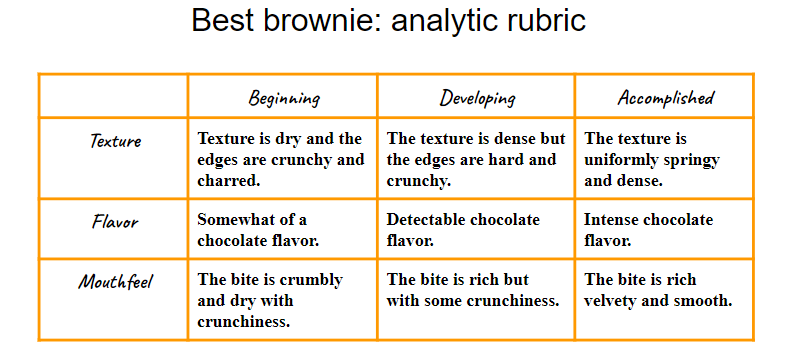There are two approaches to rubric design: top-down and bottom-up. These concepts could be very useful to learn about before we get to creating a rubric. Even if you are not sure of their meaning, you most likely used the ‘top-down’ design method! Read on to learn about it and stay tuned for the next blog post on bottom-up rubric design!
As I said most likely you used the top-down method when designing rubrics. This approach starts with having a conceptual framework that describes the skill or the knowledge you will assess. These are usually clearly described or defined in a curriculum guide or in your state standards and the national standards for your content area (Brookhart, 2013). These standards will help you start writing a rubric. You can design an analytic rubric or a holistic rubric. Let’s discuss the difference between these two.
Analytic v. Holistic Rubric
An analytic rubric will have one scale for each criterion description. A holistic rubric will have one scale considering all the criteria simultaneously. It is easier and faster to design a holistic rubric than an analytic one. Grading is faster, too: you simply look at the overall product and give it a score. The drawback of a holistic rubric is that it does not provide targeted feedback for the students. An analytic rubric, on the other hand, allows the teacher to itemize various aspects of the performance. The score the student receives serves as targeted feedback for that criterion. See the difference between my two rubrics for ‘best brownie’: an analytic and a holistic one below.


Whether you select an analytic or a holistic rubric, I recommend writing the ‘proficient’ level performance statement since most students will likely reach this level. Please see my How to start writing a rubric blog post for more details. You might also find my post on Tips for Rubric Design useful as well.
Source:
Brookhart, S. M. (2013). How to Create and Use Rubrics for Formative Assessment and Grading. Association of Supervision and Curriculum Development (ASCD).

